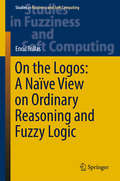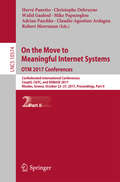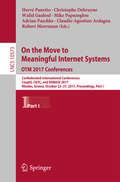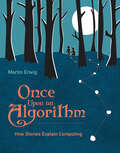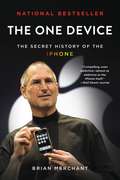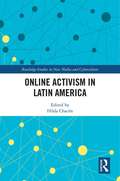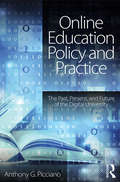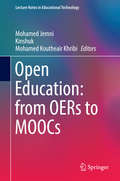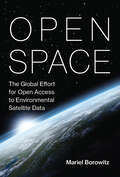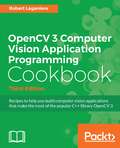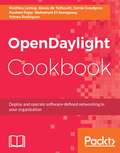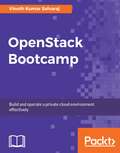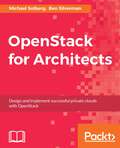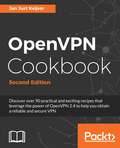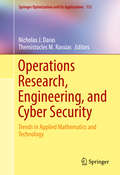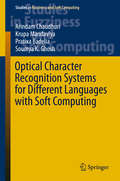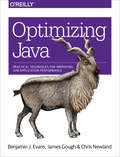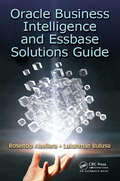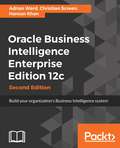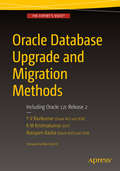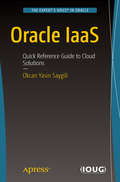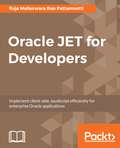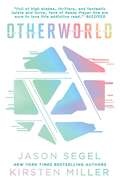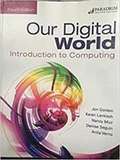- Table View
- List View
On the Logos: A Naïve View on Ordinary Reasoning and Fuzzy Logic (Studies in Fuzziness and Soft Computing #354)
by Enric TrillasThis book offers an inspiring and naïve view on language and reasoning. It presents a new approach to ordinary reasoning that follows the author’s former work on fuzzy logic. Starting from a pragmatic scientific view on meaning as a quantity, and the common sense reasoning from a primitive notion of inference, which is shared by both laypeople and experts, the book shows how this can evolve, through the addition of more and more suppositions, into various formal and specialized modes of precise, imprecise, and approximate reasoning. The logos are intended here as a synonym for rationality, which is usually shown by the processes of questioning, guessing, telling, and computing. Written in a discursive style and without too many technicalities, the book presents a number of reflections on the study of reasoning, together with a new perspective on fuzzy logic and Zadeh’s “computing with words” grounded in both language and reasoning. It also highlights some mathematical developments supporting this view. Lastly, it addresses a series of questions aimed at fostering new discussions and future research into this topic. All in all, this book represents an inspiring read for professors and researchers in computer science, and fuzzy logic in particular, as well as for psychologists, linguists and philosophers.
On the Move to Meaningful Internet Systems. OTM 2017 Conferences: Confederated International Conferences: CoopIS, C&TC, and ODBASE 2017, Rhodes, Greece, October 23-27, 2017, Proceedings, Part II (Lecture Notes in Computer Science #10574)
by Hervé Panetto, Christophe Debruyne, Walid Gaaloul, Mike Papazoglou, Adrian Paschke, Claudio Agostino Ardagna and Robert MeersmanThis double volumes LNCS 10573-10574 constitutes the refereed proceedings of the Confederated International Conferences: Cooperative Information Systems, CoopIS 2017, Ontologies, Databases, and Applications of Semantics, ODBASE 2017, and Cloud and Trusted Computing, C&TC, held as part of OTM 2017 in October 2017 in Rhodes, Greece.The 61 full papers presented together with 19 short papers were carefully reviewed and selected from 180 submissions. The OTM program every year covers data and Web semantics, distributed objects, Web services, databases, information systems, enterprise workflow and collaboration, ubiquity, interoperability, mobility, grid and high-performance computing.
On the Move to Meaningful Internet Systems. OTM 2017 Conferences: Confederated International Conferences: CoopIS, C&TC, and ODBASE 2017, Rhodes, Greece, October 23-27, 2017, Proceedings, Part I (Lecture Notes in Computer Science #10573)
by Hervé Panetto, Christophe Debruyne, Walid Gaaloul, Mike Papazoglou, Adrian Paschke, Claudio Agostino Ardagna and Robert MeersmanThis double volumes LNCS 10573-10574 constitutes the refereed proceedings of the Confederated International Conferences: Cooperative Information Systems, CoopIS 2017, Ontologies, Databases, and Applications of Semantics, ODBASE 2017, and Cloud and Trusted Computing, C&TC, held as part of OTM 2017 in October 2017 in Rhodes, Greece.The 61 full papers presented together with 19 short papers were carefully reviewed and selected from 180 submissions. The OTM program every year covers data and Web semantics, distributed objects, Web services, databases, information systems, enterprise workflow and collaboration, ubiquity, interoperability, mobility, grid and high-performance computing.
On the Verge
by Rebecca D. CostaThe author of The Watchman&’s Rattle &“has done it again. On the Verge shows how predictive technologies and science are redefining modern leadership&” (George Mitchell, former Senate Majority Leader). &“There can be no greater advantage than certainty of the future. Not in nature. Not in business. Not in governance.&” So begins Rebecca Costa&’s much-awaited exploration of foresight: &“the crowning achievement of human ambition.&” According to Costa, advances in Big Data, predictive analytics, genomics, artificial intelligence, and other breakthroughs have made it possible to pinpoint future results with mind-blowing accuracy—cracking the door to what Costa calls predaptation: the ability to adapt before the fact. Never before has the information needed to avert danger, get the jump ahead of others, or prepare for the inevitable been so clearly within grasp. Through fascinating real-life examples, Costa reveals how technology has brought nations, businesses, and individuals to the edge of clairvoyance. Yet, our ability to act on foreknowledge often falls short—causing leaders to squander the advantage of preemption. To counteract this failure, Costa illuminates 12 principles of adaptation, and predaptation, used to succeed in fast-moving environments. In the spirit of the best in popular science, On the Verge is a landmark examination of big-picture forces affecting society today. Costa&’s unique sociobiological perspective, combined with her ability to blend humor, breaking science, and insightful personal stories, distinguishes her as one of the most important thought leaders of our time. &“If you have an insatiable curiosity about the impact of innovation on our world ahead and how the future can be manipulated, you will love this book.&”—John Sculley, former CEO of Apple and President of Pepsi-Cola
Once Upon an Algorithm: How Stories Explain Computing (The\mit Press Ser.)
by Martin ErwigHow Hansel and Gretel, Sherlock Holmes, the movie Groundhog Day, Harry Potter, and other familiar stories illustrate the concepts of computing.Picture a computer scientist, staring at a screen and clicking away frantically on a keyboard, hacking into a system, or perhaps developing an app. Now delete that picture. In Once Upon an Algorithm, Martin Erwig explains computation as something that takes place beyond electronic computers, and computer science as the study of systematic problem solving. Erwig points out that many daily activities involve problem solving. Getting up in the morning, for example: You get up, take a shower, get dressed, eat breakfast. This simple daily routine solves a recurring problem through a series of well-defined steps. In computer science, such a routine is called an algorithm.Erwig illustrates a series of concepts in computing with examples from daily life and familiar stories. Hansel and Gretel, for example, execute an algorithm to get home from the forest. The movie Groundhog Day illustrates the problem of unsolvability; Sherlock Holmes manipulates data structures when solving a crime; the magic in Harry Potter's world is understood through types and abstraction; and Indiana Jones demonstrates the complexity of searching. Along the way, Erwig also discusses representations and different ways to organize data; “intractable” problems; language, syntax, and ambiguity; control structures, loops, and the halting problem; different forms of recursion; and rules for finding errors in algorithms.This engaging book explains computation accessibly and shows its relevance to daily life. Something to think about next time we execute the algorithm of getting up in the morning.
The One Device: The Secret History of the iPhone
by Brian Merchant"The One Device is a tour de force, with fast-paced edge and heaps of analytical insight." -Ashlee Vance, New York Times bestselling author of Elon Musk"A stunning book. You will never look at your iPhone the same way again." -Dan Lyons, New York Times bestselling author of DisruptedThe secret history of the invention that changed everything-and became the most profitable product in the world.Odds are that as you read this, an iPhone is within reach. But before Steve Jobs introduced us to "the one device," as he called it, a cell phone was merely what you used to make calls on the go.How did the iPhone transform our world and turn Apple into the most valuable company ever? Veteran technology journalist Brian Merchant reveals the inside story you won't hear from Cupertino-based on his exclusive interviews with the engineers, inventors, and developers who guided every stage of the iPhone's creation.This deep dive takes you from inside One Infinite Loop to 19th century France to WWII America, from the driest place on earth to a Kenyan pit of toxic e-waste, and even deep inside Shenzhen's notorious "suicide factories." It's a firsthand look at how the cutting-edge tech that makes the world work-touch screens, motion trackers, and even AI-made their way into our pockets.The One Device is a roadmap for design and engineering genius, an anthropology of the modern age, and an unprecedented view into one of the most secretive companies in history. This is the untold account, ten years in the making, of the device that changed everything.
Online Activism in Latin America (Routledge Studies in New Media and Cyberculture)
by Hilda ChacónOnline Activism in Latin America examines the innovative ways in which Latin American citizens, and Latin@s in the U.S., use the Internet to advocate for causes that they consider just. The contributions to the volume analyze citizen-launched websites, interactive platforms, postings, and group initiatives that support a wide variety of causes, ranging from human rights to disability issues, indigenous groups’ struggles, environmental protection, art, poetry and activism, migrancy, and citizen participation in electoral and political processes. This collection bears witness to the early stages of a very unique and groundbreaking form of civil activism culture now growing in Latin America.
Online Education Policy and Practice: The Past, Present, and Future of the Digital University
by Anthony G. PiccianoOnline Education Policy and Practice examines the past, present, and future of networked learning environments and the changing role of faculty within them. As digital technologies in higher education increasingly enable blended classrooms, collaborative assignments, and wider student access, an understanding of the creation and ongoing developments of these platforms is needed more than ever. By investigating the history of online education, the rise and critique of MOOCs, the mainstreaming of social media, mobile devices, gaming in instruction, and more, this expansive book outlines a variety of potential scenarios likely to become realities in higher education over the next decade.
Open Education: from OERs to MOOCs
by Mohamed Jemni Kinshuk Mohamed Koutheair KhribiThis book focuses on the emerging phenomenon of Massive Open Online Courses (MOOCs), which are changing the fundamental underpinning of educational systems worldwide and forcing educators and other stakeholders to re-think the way instruction is currently conducted. It examines the origins of MOOCs within the context of the open education movement, and reviews current policies, guidelines and initiatives to promote the use of ICT in education through the development and use of open educational resources from international practices, including implementation and licensing issues. With a particular focus on new trends in MOOCs, the book explores the potential of this emerging paradigm, its rise and its impact on openness in education. Various new initiatives are also presented, including more global examples and those that are more geared to certain regional contexts. The book is intended as a stepping stone for both researchers and practitioners who are looking to approach MOOCs from a holistic perspective.
Open Space: The Global Effort for Open Access to Environmental Satellite Data (Information Policy)
by Mariel BorowitzAn examination of environmental satellite data sharing policies, offering a model of data-sharing policy development, case and practical recommendations for increasing global data sharing.Key to understanding and addressing climate change is continuous and precise monitoring of environmental conditions. Satellites play an important role in collecting climate data, offering comprehensive global coverage that can't be matched by in situ observation. And yet, as Mariel Borowitz shows in this book, much satellite data is not freely available but restricted; this remains true despite the data-sharing advocacy of international organizations and a global open data movement. Borowitz examines policies governing the sharing of environmental satellite data, offering a model of data-sharing policy development and applying it in case studies from the United States, Europe, and Japan—countries responsible for nearly half of the unclassified government Earth observation satellites. Borowitz develops a model that centers on the government agency as the primary actor while taking into account the roles of such outside actors as other government officials and non-governmental actors, as well as the economic, security, and normative attributes of the data itself. The case studies include the U.S. National Aeronautics and Space Administration (NASA) and the U.S. National Oceanographic and Atmospheric Association (NOAA), and the United States Geological Survey (USGS); the European Space Agency (ESA) and the European Organization for the Exploitation of Meteorological Satellites (EUMETSAT); and the Japanese Aerospace Exploration Agency (JAXA) and the Japanese Meteorological Agency (JMA). Finally, she considers the policy implications of her findings for the future and provides recommendations on how to increase global sharing of satellite data.
OpenCV 3 Computer Vision Application Programming Cookbook - Third Edition
by Robert LaganiereRecipes to help you build computer vision applications that make the most of the popular C++ library OpenCV 3 About This Book • Written to the latest, gold-standard specification of OpenCV 3 • Master OpenCV, the open source library of the computer vision community • Master fundamental concepts in computer vision and image processing • Learn about the important classes and functions of OpenCV with complete working examples applied to real images Who This Book Is For OpenCV 3 Computer Vision Application Programming Cookbook Third Edition is appropriate for novice C++ programmers who want to learn how to use the OpenCV library to build computer vision applications. It is also suitable for professional software developers who wish to be introduced to the concepts of computer vision programming. It can also be used as a companion book for university-level computer vision courses. It constitutes an excellent reference for graduate students and researchers in image processing and computer vision. What You Will Learn • Install and create a program using the OpenCV library • Process an image by manipulating its pixels • Analyze an image using histograms • Segment images into homogenous regions and extract meaningful objects • Apply image filters to enhance image content • Exploit the image geometry in order to relay different views of a pictured scene • Calibrate the camera from different image observations • Detect people and objects in images using machine learning techniques • Reconstruct a 3D scene from images In Detail Making your applications see has never been easier with OpenCV. With it, you can teach your robot how to follow your cat, write a program to correctly identify the members of One Direction, or even help you find the right colors for your redecoration. OpenCV 3 Computer Vision Application Programming Cookbook Third Edition provides a complete introduction to the OpenCV library and explains how to build your first computer vision program. You will be presented with a variety of computer vision algorithms and exposed to important concepts in image and video analysis that will enable you to build your own computer vision applications. This book helps you to get started with the library, and shows you how to install and deploy the OpenCV library to write effective computer vision applications following good programming practices. You will learn how to read and write images and manipulate their pixels. Different techniques for image enhancement and shape analysis will be presented. You will learn how to detect specific image features such as lines, circles or corners. You will be introduced to the concepts of mathematical morphology and image filtering. The most recent methods for image matching and object recognition are described, and you'll discover how to process video from files or cameras, as well as how to detect and track moving objects. Techniques to achieve camera calibration and perform multiple-view analysis will also be explained. Finally, you'll also get acquainted with recent approaches in machine learning and object classification. Style and approach This book will arm you with the basics you need to start writing world-aware applications right from a pixel level all the way through to processing video sequences.
OpenDaylight Cookbook
by Jamie Goodyear Alexis De Talhouet Mathieu Lemay Mohamed El-Serngawy Rashmi PujarOver 90 recipes to gain the critical skills needed to deploy and manage OpenDaylight-based solutions About This Book • This book will help you to build intelligent SDN networks that save your company time, money, and resources • From eminent authors, learn to address real-world challenges and troubleshoot day-to-day scalability and performance problems faced in OpenDayLight deployments • This is the only book that offers you quick fixes to create your own branded OpenDaylight Who This Book Is For This book is for experienced network administrators and IT professionals who are using or deploying SDN/OpenDaylight and are looking to gain expertise in building SDN solutions for organizations. What You Will Learn • Grasp the fundamentals of OpenDaylight • Customize, authenticate, & authorize in OpenDaylight • Analyse network access control and policy • Manage datacenter optimization • Integrate OpenDaylight with third-party frameworks • Deploy, configure, and tune OpenDaylight-based solutions In Detail OpenDaylight is an open source platform to program and build Software-Defined Networks (SDN). Its aim is to accelerate the adoption of SDN and NFV. With above 90 practical recipes, this book will help you to solve day-to-day problems and maintenance tasks surrounding OpenDaylight's implementation. This book starts with the OpenDaylight fundamentals. In this book, you will gain a sound understanding of the methods and techniques when deploying OpenDaylight in production environment. Later on, you will learn to create a Service Chain using SFC. This book will address common problems and day-to-day maintenance tasks with OpenDaylight. We'll also will teach you how to interact with OpenDaylight APIs and use the necessary tools to simulate networks. You will also explore how to create your own branded OpenDaylight along with authorising and authenticating users using OpenDaylight Identity Manager. By the end of this book, you will have the necessary skills to operate an OpenDaylight SDN environment. Style and approach With a diverse range of topics, this will be a guide which will help the readers gain the necessary skills needed to deploy and operate OpenDaylight in your organisation through practical recipes.
OpenStack Bootcamp
by Vinoth Kumar SelvarajA focused and systematic introduction to OpenStack, the largest open source cloud platform, using practical examples and hands-on problems. About This Book • Explore all the new features of OpenStack's Mikata, Ocata, and Newton releases and get up to speed with OpenStack in no time • Learn something new each day to successfully build a private cloud platform • A fast-paced guide filled with best practices that will help you manage your virtual private cloud efficiently Who This Book Is For This book is for those who are already familiar with OpenStack's supporting technologies. It's ideal for cloud system engineers, system administrators, and technical architects who are moving from a virtualized environment to a cloud environment. Prior knowledge of cloud computing platforms and virtualization would be beneficial. If you are a system or cloud engineer, this is your go-to book! What You Will Learn • Understand the functions and features of each core component of OpenStack and a real-world comparison • Develop an understanding of the components of IaaS and PaaS clouds built with OpenStack • Get a high-level understanding of architectural design in OpenStack • Discover how you can use OpenStack Horizon with all of the OpenStack core components • Understand network traffic flow with Neutron • Build an OpenStack private cloud from scratch • Get hands-on training with the OpenStack command line, administration, and deployment In Detail OpenStack is developed by a thriving community of individual developers around the globe and is backed by most of the leading players in the cloud space today. OpenStack is a free and open source software platform for cloud computing, mostly deployed as an infrastructure-as-a-service (IaaS). This book begins with the design principles of OpenStack and the available OpenStack distributions. You'll start by getting a fundamental understanding of the core concepts and then move on to a comparison of OpenStack components with real-life examples. Then, we'll show you the typical architecture of OpenStack clouds, how to configure each OpenStack component, and debugging techniques. Later, we focus on the latest releases of OpenStack: Mikata, Newton, and Ocata. You'll be introduced to identity, image, networking, and the compute service. You'll also get a complete understanding of how to install, configure, and administrate your entire virtual private cloud. You will also be provided with hands-on exercises to unleash the power of each component in OpenStack. Finally, you'll see an overview of all the optional projects available under the Openstack umbrella. Style and approach This fast-paced book delivers comprehensive hands-on training, so you can jump straight into the practical exercises along with in-depth coverage of OpenStack technologies. It also provides hands-on exercises, analysis of real-world cloud use cases and operation scenarios, covering design, customization and optimization.
OpenStack for Architects
by Ben Silverman Michael SolbergDesign and implement successful private clouds with OpenStack About This Book • Explore the various design choices available for cloud architects within an OpenStack deployment • Craft an OpenStack architecture and deployment pipeline to meet the unique needs of your organization • Create a product roadmap for Infrastructure as a Service in your organization using this hands-on guide Who This Book Is For This book is written especially for those who will design OpenStack clouds and lead their implementation. These people are typically cloud architects, but may also be in product management, systems engineering, or enterprise architecture. What You Will Learn • Familiarize yourself with the components of OpenStack • Build an increasingly complex OpenStack lab deployment • Write compelling documentation for the architecture teams within your organization • Apply Agile configuration management techniques to deploy OpenStack • Integrate OpenStack with your organization's identity management, provisioning, and billing systems • Configure a robust virtual environment for users to interact with • Use enterprise security guidelines for your OpenStack deployment • Create a product roadmap that delivers functionality quickly to the users of your platform In Detail Over the last five years, hundreds of organizations have successfully implemented Infrastructure as a Service (IaaS) platforms based on OpenStack. The huge amount of investment from these organizations, industry giants such as IBM and HP, as well as open source leaders such as Red Hat have led analysts to label OpenStack as the most important open source technology since the Linux operating system. Because of its ambitious scope, OpenStack is a complex and fast-evolving open source project that requires a diverse skill-set to design and implement it. This guide leads you through each of the major decision points that you'll face while architecting an OpenStack private cloud for your organization. At each point, we offer you advice based on the experience we've gained from designing and leading successful OpenStack projects in a wide range of industries. Each chapter also includes lab material that gives you a chance to install and configure the technologies used to build production-quality OpenStack clouds. Most importantly, we focus on ensuring that your OpenStack project meets the needs of your organization, which will guarantee a successful rollout. Style and approach This is practical, hands-on guide to implementing OpenStack clouds, where each topic is illustrated with real-world examples and then the technical points are proven in the lab.
OpenVPN Cookbook - Second Edition
by Jan Just KeijserDiscover over 90 practical and exciting recipes that leverage the power of OpenVPN 2.4 to help you obtain a reliable and secure VPN About This Book • Master the skills of configuring, managing, and securing your VPN using the latest OpenVPN • Gain expertise in establishing IPv6 connections and understand PolarSSL using the latest version of OpenVPN • This book contains enticing recipes about OpenVPN functionalities that cater to mission critical applications Who This Book Is For This book is for system administrators who have a basic knowledge of OpenVPN and are eagerly waiting to build, secure, and manage VPNs using the latest version. This book assumes some prior knowledge of TCP/IP networking and OpenVPN and you must have network administration skills to get the most out of this book. What You Will Learn • Determine the best type of OpenVPN setup for your networking needs • Get to grips with the encryption, authentication, and certifications features of OpenSSL. • Integrate an OpenVPN server into the local IT infrastructure with the scripting features of OpenVPN • Ease the integration of Windows clients into the VPN using Windows-specific client-side configuration • Understand the authentication plugins for PAM and LDAP • Get to know the difference between TUN-style and TAP-style networks and when to use what • Troubleshoot your VPN setup • Establish a connection via IPv6 along with demonstrations In Detail OpenVPN provides an extensible VPN framework that has been designed to ease site-specific customization, such as providing the capability to distribute a customized installation package to clients, and supporting alternative authentication methods via OpenVPN's plugin module interface. This book provides you with many different recipes to help you set up, monitor, and troubleshoot an OpenVPN network. You will learn to configure a scalable, load-balanced VPN server farm that can handle thousands of dynamic connections from incoming VPN clients. You will also get to grips with the encryption, authentication, security, extensibility, and certifications features of OpenSSL. You will also get an understanding of IPv6 support and will get a demonstration of how to establish a connection via IPv64. This book will explore all the advanced features of OpenVPN and even some undocumented options, covering all the common network setups such as point-to-point networks and multi-client TUN-style and TAP-style networks. Finally, you will learn to manage, secure, and troubleshoot your virtual private networks using OpenVPN 2.4. Style and approach This practical, recipe-based book covers the core functionalities of OpenVPN ending with troubleshooting, performance tuning and making the readers inquisitive about the advanced features.
Operations Research, Engineering, and Cyber Security
by Nicholas J. Daras Themistocles M. RassiasMathematical methods and theories with interdisciplinary applications are presented in this book. The eighteen contributions presented in this Work have been written by eminent scientists; a few papers are based on talks which took place at the International Conference at the Hellenic Artillery School in May 2015. Each paper evaluates possible solutions to long-standing problems such as the solvability of the direct electromagnetic scattering problem, geometric approaches to cyber security, ellipsoid targeting with overlap, non-equilibrium solutions of dynamic networks, measuring ballistic dispersion, elliptic regularity theory for the numerical solution of variational problems, approximation theory for polynomials on the real line and the unit circle, complementarity and variational inequalities in electronics, new two-slope parameterized achievement scalarizing functions for nonlinear multiobjective optimization, and strong and weak convexity of closed sets in a Hilbert space. Graduate students, scientists, engineers and researchers in pure and applied mathematical sciences, operations research, engineering, and cyber security will find the interdisciplinary scientific perspectives useful to their overall understanding and further research.
Optical Character Recognition Systems for Different Languages with Soft Computing
by Arindam Chaudhuri Krupa Mandaviya Pratixa Badelia Soumya K. GhoshThe book offers a comprehensive survey of soft-computing models for optical character recognition systems. The various techniques, including fuzzy and rough sets, artificial neural networks and genetic algorithms, are tested using real texts written in different languages, such as English, French, German, Latin, Hindi and Gujrati, which have been extracted by publicly available datasets. The simulation studies, which are reported in details here, show that soft-computing based modeling of OCR systems performs consistently better than traditional models. Mainly intended as state-of-the-art survey for postgraduates and researchers in pattern recognition, optical character recognition and soft computing, this book will be useful for professionals in computer vision and image processing alike, dealing with different issues related to optical character recognition.
Optimizing Java: Practical Techniques for Improving JVM Application Performance
by Benjamin J Evans James Gough Chris NewlandPerformance tuning is an experimental science, but that doesn’t mean engineers should resort to guesswork and folklore to get the job done. Yet that’s often the case. With this practical book, intermediate to advanced Java technologists working with complex technology stacks will learn how to tune Java applications for performance using a quantitative, verifiable approach.Most resources on performance tend to discuss the theory and internals of Java virtual machines, but this book focuses on the practicalities of performance tuning by examining a wide range of aspects. There are no simple recipes, tips and tricks, or algorithms to learn. Performance tuning is a process of defining and determining desired outcomes. And it requires diligence.Learn how Java principles and technology make the best use of modern hardware and operating systemsExplore several performance tests and common anti-patterns that can vex your teamUnderstand the pitfalls of measuring Java performance numbers and the drawbacks of microbenchmarkingDive into JVM garbage collection logging, monitoring, tuning, and toolsExplore JIT compilation and Java language performance techniquesLearn performance aspects of the Java Collections API and get an overview of Java concurrency
Oracle Business Intelligence and Essbase Solutions Guide
by Lakshman Bulusu Rosendo AbelleraThis book highlights the practical aspects of using Oracle Essbase and Oracle Business Intelligence Enterprise Edition (OBIEE) as a comprehensive BI solution. It explains the key steps involved in Oracle Essbase and OBIEE implementations. Using case studies, the book covers Oracle Essbase for analytical BI and data integration, using OBIEE for operational BI including presentation services and BI Publisher for real-time reporting services, Self-service BI– in terms of VLDB, scalability, high performance, stability, long-lasting and ease of use that saves time, effort, and costs, while maximizing ROI.
Oracle Business Intelligence Enterprise Edition 12c - Second Edition
by Adrian Ward Christian Screen Haroun KhanA comprehensive guide from Oracle experts, that will act as your single point of reference for building an Oracle BI 12c system that turns data in actionable insight. About This Book • Come, start your first Oracle Business intelligence system and excel in BI with this exhaustive guide • An all-encompassing guide for your Oracle business intelligence needs • Learn from the self-paced professional guidance and implement Oracle business intelligence using this easy-to-follow guide by our experts Who This Book Is For If your job includes working on data, improving the financial or operational performance of your organization or you are a consultant for the above, then this book is for you. If you have been placed on a business intelligence project, then this book is for you. If you are the Project Manager, Business Analyst or Data Scientist then this book is for you. If you are an end user of Oracle Business Intelligence, then this book is for you too. Having a basic understanding of databases and the use of Business Intelligence is expected, but no knowledge of Oracle BI is required. What You Will Learn • Install OBIEE in Windows, including how to create the underlying Weblogic Application server and the required database • Build the BI system repository, the vital engine connecting your data to the front end of Oracle BI • Develop effective analysis, draw out meaning from the data, and present it to end users on interactive dashboards • Build pixel-perfect, printable reports using the embedded BI Publisher feature • Build agents for actionable insight and enable your users to act on Business Intelligence at their desktop or on the move • Understand the various aspects of securing the Oracle BI system, from data restrictions to whole dashboard access rights • Get acquainted with the system management tools and methods available for the continuous improvement of your system In Detail Oracle Business Intelligence Enterprise Edition (OBIEE) 12c is packed full of features and has a fresh approach to information presentation, system management, and security. OBIEE can help any organization to understand its data, to make useful information from data, and to ensure decision-making is supported by facts. OBIEE can focus on information that needs action, alerting users when conditions are met. OBIEE can be used for data analysis, form production, dashoarding, and workflow processes. We will introduce you to OBIEE features and provide a step-by-step guide to build a complete system from scratch. With this guide, you will be equipped with a good basic understanding of what the product contains, how to install and configure it, and how to create effective Business Intelligence. This book contains the necessary information for a beginner to create a high-performance OBIEE 12c system. This book is also a guide that explains how to use an existing OBIEE 12c system, and shows end users how to create. Style and approach This book will take you from one feature to another in a step-by-step manner and will teach how you can create effective business intelligence using Oracle Business Intelligence Enterprise Edition. You will be taught how to create BI solutions and dashboards from scratch. There will be multiple modules in the book, each module spread in chapters, that will cover one aspect of business intelligence in a systematic manner.
Oracle Database Upgrade and Migration Methods
by Y V Ravikumar K M Krishnakumar Nassyam BashaLearn all of the available upgrade and migration methods in detail to move to Oracle Database version 12c. You will become familiar with database upgrade best practices to complete the upgrade in an effective manner and understand the Oracle Database 12c patching process. So it's time to upgrade Oracle Database to version 12c and you need to choose the appropriate method while considering issues such as downtime. This book explains all of the available upgrade and migration methods so you can choose the one that suits your environment. You will be aware of the practical issues and proactive measures to take to upgrade successfully and reduce unexpected issues. With every release of Oracle Database there are new features and fixes to bugs identified in previous versions. As each release becomes obsolete, existing databases need to be upgraded. Oracle Database Upgrade and Migration Methods explains each method along with its strategy, requirements, steps, and known issues that have been seen so far. This book also compares the methods to help you choose the proper method according to your constraints. Also included in this book: Pre-requisite patches and pre-upgrade steps Patching to perform changes at the binary and database level to apply bug fixes What You Will Learn: Understand the need and importance of database upgrading and migration Be aware of the challenges associated with database upgrade decision making Compare all upgrade/migration methods Become familiar with database upgrade best practices and recommendations Understand database upgrade concepts in high availability and multi-tenant environments Understand Oracle 12c patching concepts Know the database downgrade steps in case the upgraded database isn't compatible with the environment Know the features and benefits to the organizations when it moves from the old database version to the latest database version Who This Book Is For: Core database administrators, solution architects, business consultants, and database architects
Oracle IaaS
by Okcan Yasin SaygiliFollow this guide that explains Oracle's Infrastructure as a Service (IaaS) cloud solution and the tools and capabilities that can help you increase business value, productivity, and performance. You will learn about economic advantages as well as elasticity, unlimited storage, and on-demand capacity computing. Oracle IaaS: Quick Reference Guide to Cloud Solutions covers Oracle's service structure as well as its cloud service offerings and cloud models. It provides detailed guidance regarding the advantages of the specific models, as well as how to create and manage each service. This book contains many real-world case studies, including how to build and configure compute resources to fit the needs of your specific organization. IaaS product offerings covered in this book include: Oracle Compute Cloud Oracle Storage Cloud Oracle Ravello Cloud Oracle Container Cloud What You'll Learn Understand Oracle IaaS products and Oracle Cloud Compare existing Oracle cloud products Discover IaaS new features Master Oracle Cloud Architecture Who This Book Is For Oracle database administrators, Oracle developers, and other developers looking to build cloud-based applications.
Oracle JET for Developers
by Raja Malleswara PattamsettiClient side JavaScript for enterprise Oracle applications. About This Book • Develop resilient and robust client-side applications • Explore the power of popular JavaScript libraries such as jQuery, RequireJS, and custom Oracle JavaScript libraries • Integrate JavaScript for Oracle developers • Easily debug and secure your cloud interfaces Who This Book Is For If you are a web components developer looking to create client-side apps that are resilient and robust using Oracle JET, then this book is the right choice for you. What You Will Learn • Use Yeoman or npm to start a new Oracle JET-based project • Implement real-world use cases using Oracle JET components • Get to know the best practices for Oracle JET web applications • Explore Knockout.js, the framework behind Oracle JET • Implement a multi-platform app with OJ and Cordova In Detail This book will give you a complete practical understanding of the Oracle JavaScript Extension Toolkit (JET) and how you can use it to develop efficient client-side applications with ease. It will tell you how to get your own customized Oracle JET set up. You'll start with individual libraries, such as jQuery, Cordova, and Require.js. You'll also get to work with the JavaScript libraries created by Oracle, especially for cloud developers. You'll use these tools to create a working backend application with these libraries. Using the latest Oracle Alta UI, you'll develop a state-of-the-art backend for your cloud applications. You'll learn how to develop and integrate the different cloud services required for your application and use other third-party libraries to get more features from your cloud applications. Toward the end of the book, you'll learn how to manage and secure your cloud applications, and test them to ensure seamless deployment. Style and approach This book will have a practical step by step approach where every step of application development will be explained in detail with code samples.
Otherworld: Last Reality Series (Last Reality Ser. #1)
by Jason Segel Kirsten Miller"Full of high stakes, thrillers, and fantastic twists and turns, fans of Ready Player One are sure to love this addictive read." —BUZZFEED Welcome to real life 2.0. Are you ready to play? There are no screens. There are no controls. You don&’t just see and hear it – you taste, smell, and touch it too. In this new reality there are no rules to follow, no laws to break. You can live your best life. It&’s a game so addictive you&’ll never want it to end. Until you realize that you&’re the one being played. Step into Otherworld. Leave your body behind. The frightening future that Jason Segel and Kirsten Miller have imagined is not far away. Otherworld asks the question we'll all soon be asking: if technology can deliver everything we want, how much are we willing to pay?
Our Digital World: Introduction to Computing (4th Edition)
by Jon Gordon Karen Lankisch Nancy Muir Denise Seguin Anita VernoOur Digital World uses a contemporary approach to traditional computer concepts learning by integrating textbook resources with a variety of online activities. This new edition is a competency-based, objective-driven program that provides opportunities for students who want to explore topics. It provides you and your students:* Students can validate their new skills on each learning objective in the course and receive immediate feedback on Precheck and Recheck quizzes.* The SNAP customized Study Planner shares concept-level feedback and links to the resources that will help students succeed.* Numerous learning resources, such as videos, podcasts, online research, and hands-on activities, cater to different students' needs.
